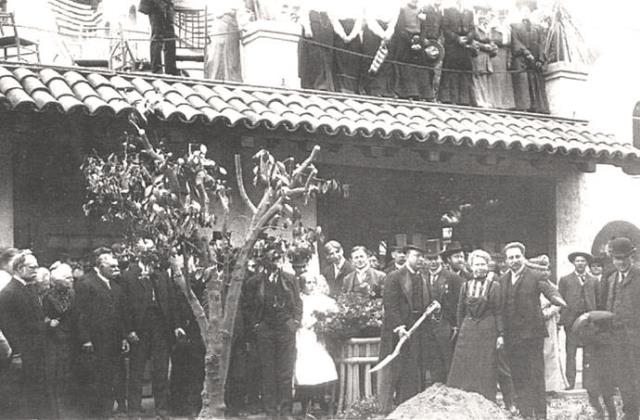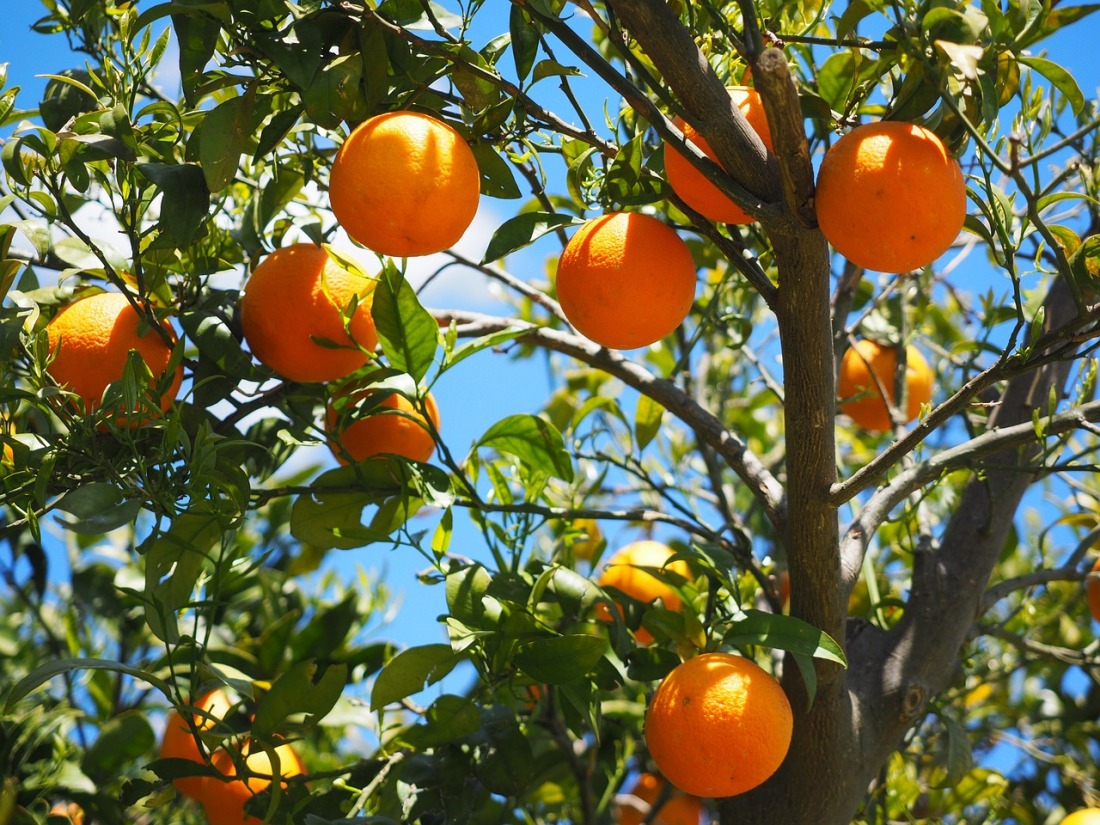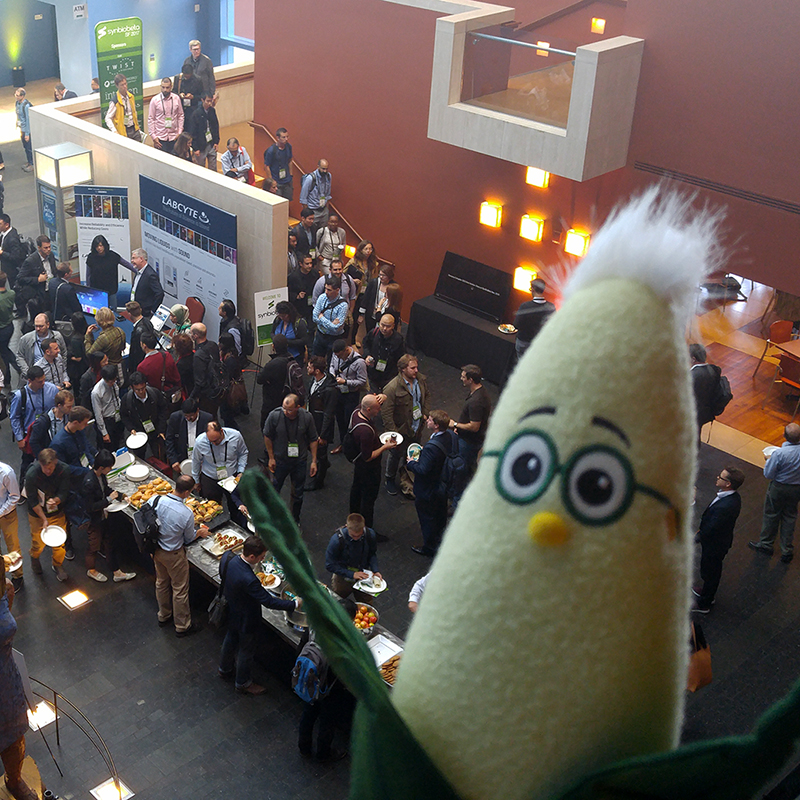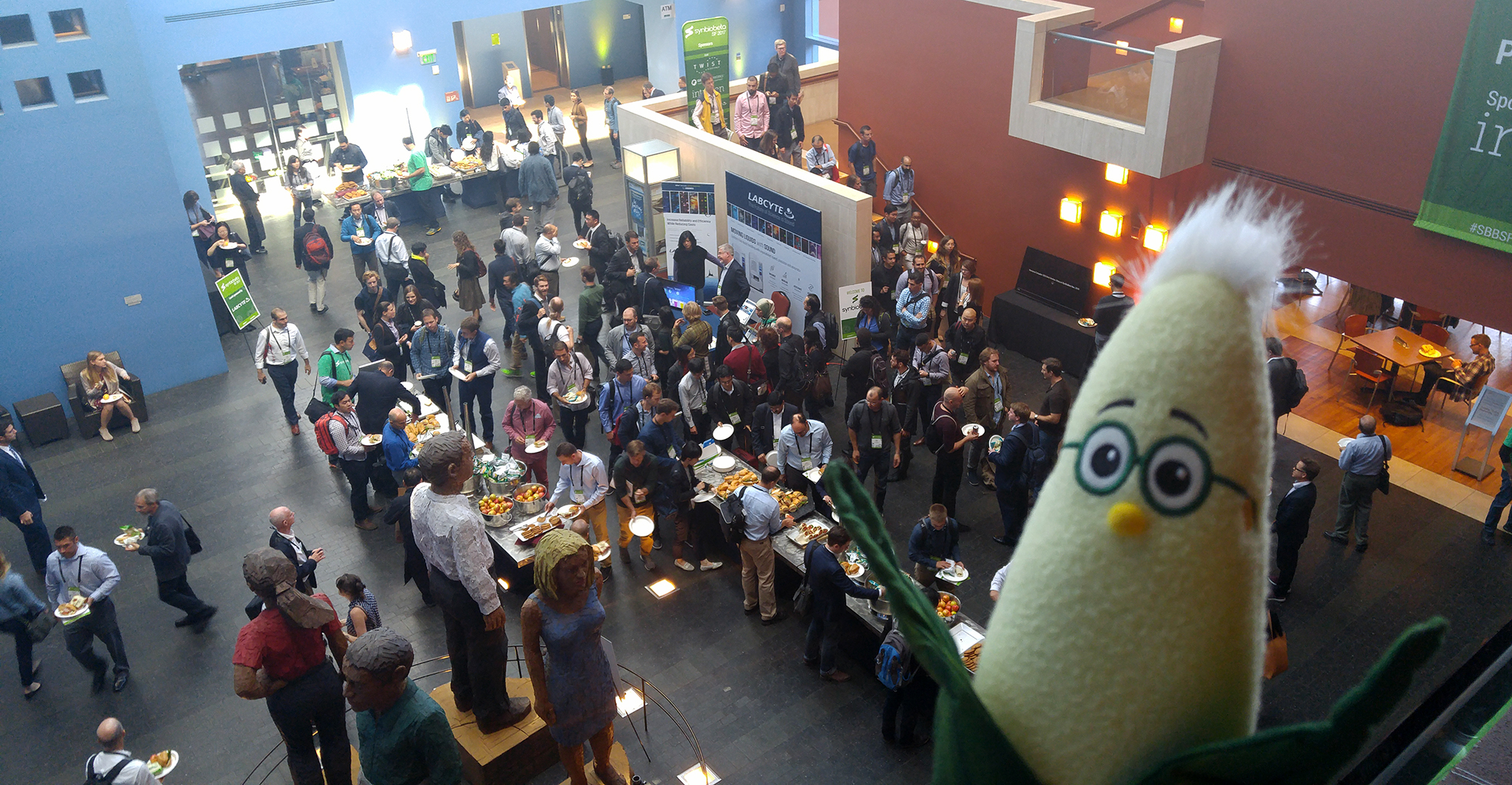A Parent Washington Navel Orange tree was donated to the historic Mission Inn in Riverside, California by the International Organization of Citrus Virologists (IOCV) on Tuesday, February 12, 2019. IOCV was founded at UC Riverside in 1957 and this gift celebrated the return of more than 200 citrus scientists. The lunchtime ceremony marked another restoration achievement for the Friends of the Mission Inn organization, and the start of the Sixth International Research Conference on Huanglongbing (IRCHLB).
Huanglongbing (HLB, also known as Citrus Greening) is the most devastating disease of citrus. In 2017, HLP reduced Florida citrus production by 70%. Approximately 600 researchers from 23 different countries gathered in Riverside to share research on this devastating disease, their progress toward understanding it, and create solutions for this calamitous pathogen spreading around the world, including California.
The story of the Parent Navel Orange trees
The tree dedication was steeped in historical significance. Riverside was built on the boughs of citrus trees, which in turn helped build California. Early American settlers who moved across the continent to found Riverside on the banks of the Santa Ana river needed a successful agricultural crop. Irrigation from the river allowed oranges to thrive early in Riverside’s history. In 1873, Eliza and Luther Tibbets imported two seedless navel orange trees from the US Department of Agriculture in Washington, DC. They became known as “Parent Navel Orange” or Washington Navel orange, one of which still stands today.

From the two parent navel orange trees brought to Riverside, an industry was born. Called the “second gold rush”, 20,000 acres of citrus trees gave Riverside the highest per-capita income in the entire country in just 20 years. Together with Valencia oranges that grew well in the aptly-named Orange County, the Washington Navel Orange reached a wide market when refrigerated railroad cars arrived in 1904.
In 1902, one of the two Parent Navel Oranges was transplanted to a small park in downtown Riverside. It endured bouts of gummosis that girdled the tree, but was ultimately saved by UC Riverside plant pathologists. The second parent navel was transplanted to the Mission Inn in 1903 with the participation of President Theodore Roosevelt, but declined and died in 1922. It was replaced by an 11-year-old descendant, planted in 1915.
It is important to highlight that at the time of the Parent Navel introduction Riverside had a large Asian-American community. Citrus was cultivated in Asian countries such as China for centuries prior to its arrival in the Americas, so the knowledge and know-how of the Asian immigrant population was critical for the success of the California citrus industry. Another critical factor for the success of citrus in Riverside was the help by the native population, the Cahuilla people. Their intimate knowledge of the land, weather patterns, and water resources was instrumental for the early establishment of the citrus groves. Cahuilla Bird Singers were present at the opening ceremony of the 6th IRCHLB and welcomed the conference delegates from around the world.

Citrus lines depend on their parents
In citrus, like many other tree crops, successful varieties are propagated by cuttings (budwood or buds) that are clones of the original tree. But unlike other tree crops like apples or walnuts, many citrus varieties are difficult to breed new varieties. Familiar citrus fruits like sweet oranges, persian limes, and grapefruits are unique hybrids of several ancestral species.
Many popular new varieties are “bud sports”, or branches of a tree that spontaneously mutated and carry new traits. The seedless navel orange was a mutant that was discovered on Selecta sweet oranges in Bahia, Brazil. The recently popular pink-fleshed cara cara orange was a mutant discovered on a navel orange tree.
Befriending the Friends of the Mission Inn
After the ceremony in the Mission Inn, I met with members of the Friends of the Mission Inn organization over tortellini salad and citrus salmon with generous amounts of iced tea. They spoke of their their work preserving and restoring historical objects at the Mission Inn. Now approaching its 50th anniversary as a volunteer-driven organization, they recounted the myriad achievements over the years, the tree dedication being their most recent.

With over $800,000 spent on repairs and restorations, they emphasized that they only worked on historical structures, artifacts, and it seems musical instruments that the public could also enjoy. Carol Krieger said, “anything we refurbish, we want to be shown.” Aside the stage in the room the event was held in – the Grand Parisian Ballroom – was a beautiful and functional pipe organ that the Friends restored.
Beth Ballantyne, a long-time member of the organization, and whose husband helped repair the organ, further described archways with doors high enough for people to enter astride horses, wax and smoke removed from inside the St. Francis of Assisi Chapel, and a clock that they were still working on. On May 2, the pipe organ will play at their annual silent film fundraiser – that ought to be fun!
Saving historic citrus by hand
We turned to the tree again. What happened to the replacement tree at the Inn? It, too, died after many hard years. The late UC Riverside plant pathologist George A. Zentmyer, worked hard to care for the tree during the most difficult years from 1980-1992. Sharla Wright, the president of the organization, said that what meant most about bringing the new Descendent Parent Navel Orange to the Mission Inn was honoring the work of Dr. Zentmyer. Before this day, I heard that Dr. Zentmyer carried buckets of water all the way to the tree himself to keep it alive. As someone who empathizes with my own plants, I can appreciate that.
The new tree adorning the stage beside the pipe organ was grown from a cutting from the downtown Parent Navel Orange by Dr. Georgios Vidalakis, Director of the Citrus Clonal Protection Program. He spoke at the dedication of the tree, and chairs the IRCHLB meeting about to begin later the same day. The tree would have been planted much sooner if it were not for the discovery of Huanglongbing in a Riverside neighborhood – which put the entire area under quarantine. To keep from spreading the disease, it became difficult to move citrus trees in Riverside.

Looking forward to learning
The ladies who lunched with me were curious about the research on Huanglongbing, and having worked with citrus for only nine months myself, I was looking forward to learning about the latest progress at the meeting that was about to begin. Citrus Greening, for all the harm it is causing, brought these two events together here in Riverside at the same time.
The biannual IRCHLB conference brings researchers from around the world, and the sixth conference, is the biggest one ever. I’m excited for what I’ll learn, and also to convey the proceedings to the public. What’s in store, and how can you follow along?
Hundreds of scientists have registered to hear presentations, hold research meetings, present posters, and share their ideas related to a single plant disease and its insect vector. I’ve been to some big scientific conferences, but they usually covered a diverse array of organisms, discoveries, and applications. Even Maize Genetics, a conference I frequented in grad school, had only about 300-400 attendees, but they were each studying different systems. This is almost 600 attendees talking about, for the most part, one plant disease!
The conference will begin with updates on Huanglongbing from around the world, and move on to research on the putative pathogen, a bacterium associated with the disease, Candidatus Liberibacter asiaticus (CLas), and cultural controls to try to limit its spread. Sessions on the Asian Citrus Psyllid (ACP), the insect vector that spreads the disease will come with research on understanding how CLas interacts with ACP and the citrus hosts themselves. There are efforts to control the pathogen and its vector, and finally, work on developing resistance to HLB in citrus varieties will all be discussed. (See our coverage of other plant disease solutions through biotechnology such as the American chestnut and Hawaiian papaya.)
All this, over three days: March 13, 14, and 15. It will be a marathon! Not to mention, the International Organization of Citrus Virologists (IOCV) held its annual meeting starting on March 10th.
Follow along with us
To follow the conference, check out the #IRCHLB19 hashtags on Twitter and Instagram, and the California Citrus Research Board Facebook page. I will post comments on research presentations on my account at @kjhvm. Biofortified’s new Plant Plushie, @OrangeGreenie, will take photos with attendees. There will be students conducting video interviews during the conference, and I’ll let you know when those and other reports are available.
Speaking of history, there’s still that Parent Washington Navel tree in downtown Riverside. On Friday, the City of Riverside will build a screen house to protect it so it may continue to thrive even as Huanglongbing threatens its descendants throughout the state. I look forward to witnessing this and telling the next chapter of the story of this oft-overlooked and death-defying tree. The hardest part will be figuring out when I can pull myself away from the conference!
Thank you to Dr. Georgios Vidalakis for providing background information, and reviewing and editing this article.





